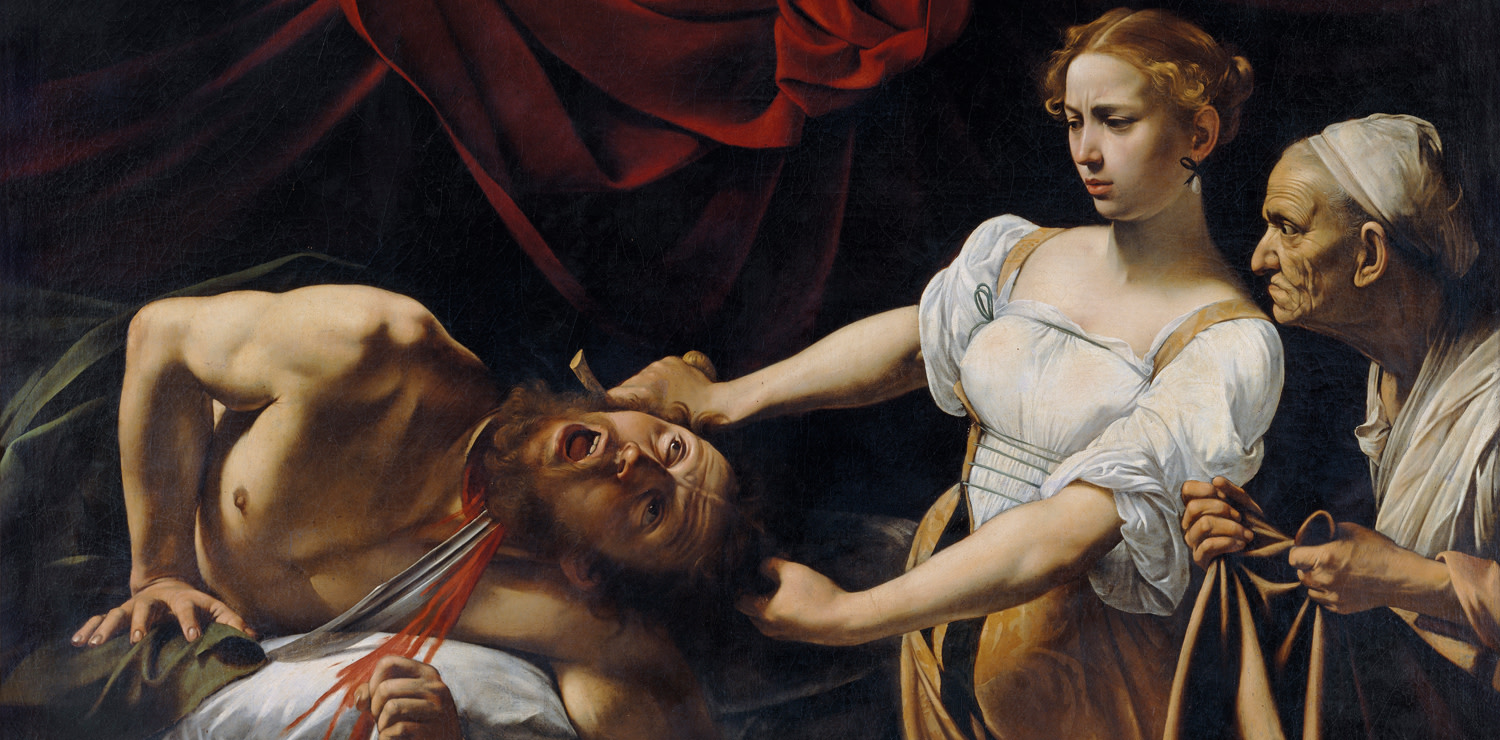Judith by Caravaggio and Artemisia
An exhibition at Palazzo Barberini explores the depiction of the biblical heroine through the centuries, starting with the two most famous paintings
While the title is programmatic, this exhibition at the Gallerie Nazionali di Arte Antica (until 27 March) promises plenty of meaty content: Caravaggio and Artemisia: the Challenge of Judith. Violence and Seduction in 16th and 17th Century Painting.
Held in the exhibition space of Palazzo Barberini, the show turns a spotlight on one of the most famous of Caravaggio’s canvases seventy years after its rediscovery and fifty years after its acquisition by the state. The painting was unearthed in 1951 by Pico Cellini, a leading art restorer of the 20th century, following a visit to the first major exhibition of Caravaggio and his pupils, held at Milan’s Palazzo Reale and curated by Roberto Longhi.
 Palazzo Barberini, Exhibition of Judith, Room 2, ph Alberto Novelli
Palazzo Barberini, Exhibition of Judith, Room 2, ph Alberto NovelliThe restorer remembered that as a young man he had seen a painting of Judith and Holofernes attributed to Orazio Gentileschi in a Roman residence and, in the light of the works on display, connected it to the style of Caravaggio. Cellini managed to trace the painting to its owner Vincenzo Coppi, photograph it and show it to Longhi, who corroborated the discovery and immediately requested an extension to the exhibition so it could be included.
The canvas was found to have been painted by Caravaggio in 1599 for the Ligurian banker Ottavio Costa, who died in 1639. It never changed hands, remaining in Rome until the mid 19th century, when it was acquired by Coppi’s ancestors and subsequently, in 1971, by the Gallerie Nazionali di Arte Antica. Despite Costa’s reluctance to exhibit, the work never lost its innovative power, and the new exhibition at Palazzo Barberini illustrates the artistic context in which it was painted, and which it profoundly influenced.
 Louis Finson
Louis FinsonThe exhibition contains 31 works - almost all large format - from major Italian and international institutions. The first of four sections is Judith at the crossroads between Style and Nature, a selection of 16th-century works that constitute the early signs of a new depiction of the subject, characterised by the violence of the moment chosen to represent the story of the biblical heroine, such as the paintings of Pierfrancesco Foschi, Lavinia Fontana, Tintoretto and a pupil of Bartholomeus Spranger. Caravaggio’s painting Judith Beheading Holofernes is the focus of the second section, dedicated to Caravaggio and his early interpreters, and its depiction of the grisly scene of murder by decapitation is a major break with tradition.
The fury of the act, which jars with the sensual beauty of Judith herself, would inspire and reinterpret the biblical story. Trophime Bigot, Valentin de Boulogne, Louis Finson, Bartolomeo Mendozzi, Giuseppe Vermiglio and Filippo Vitale all took their lead from Caravaggio’s painting: the landscape format with three-quarters life sized figures, the violence of the act and the torment of Holofernes.
However, it took a woman to put herself entirely in Judith’s shoes: the most successful interpretation of the subject was actually Artemisia Gentileschi, who lends her name to the third section, Artemisia Gentileschi and theatre of Judith. Along with her father Orazio, Artemisia tackled the theme more than once. In addition to masterpieces by the two Gentileschis, there are also works by Giovanni Baglione, Johan Liss, Bartolomeo Manfredi, Pietro Novelli, Mattia Preti, Giuseppe Vermiglio and a rare piece by Biagio Manzoni, one of the new appearances in the exhibition.
 Giuseppe Vermiglio
Giuseppe VermiglioThe fourth and final section, The virtues of Judith. Judith and David, Judith and Salome, focuses on the contrast between the theme of Judith and Holofernes and those of David and Goliath, and Salome, a heroine who is often confused with Judith in painting.
On display are works by Valentin de Boulogne, Francesco Rustici and the school of Giovanni Biliverti.









